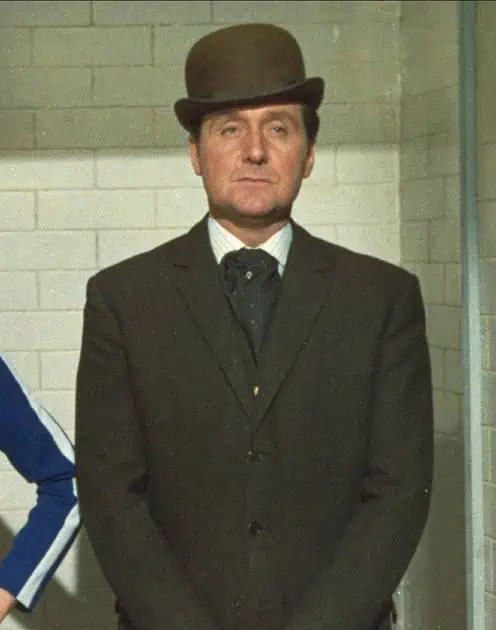
Stay Informed
Get the latest news, trends, and industry insights.
Over the years, we found clients would ask us “what should I look for when choosing a firm?” We used to give the surface-level answers about quality, strategy, communication, all that stuff that’s important. But over time we realized that clients, once they get past quickly being able to evaluate capabilities, really can choose from a lot of great firms in our industry who do fantastic work. So as The Brand Leader (see what we did there) we wanted to dive deeper into what makes a great client and marketing partnership.
So, we took inventory not of what necessarily is unique to us, but of what we have to have (and look for) in deciding if a client is a right fit for us. What we found, unfortunately, is that clients rarely look for this stuff on the front end, but inevitably it’s what erodes or fuels healthy relationships in our business, so we thought we’d share them as insights into what we require. However, perhaps they can also help serve as guidelines for you and your leadership team, if you find another firm, to work on that will ultimately foster a better client/agency relationship.
To work together, at The Brand Leader, we need:
1.) Vested and Accessible Leadership
We assume you’re making a major decision you believe can transform parts of your organization over time, and that means our success is largely based on making decisions together. If you’re still operating in the “hand it off and let someone else deal with it” mentality, you’re not there yet. That’s ok, we’re just not the generalist agency ready to execute the same-old, same-old to make sure the boxes are checked every year for the board.
2.) DNA Match
Anyone can be likeable, but successful relationships require a DNA and values match long term. When we have that, we have speed of trust which means speed of decision-making & execution with minimal concerns about turf, offending legacy employees and other things that trip up typical relationships.
3.) Open to Change
Is it evident that both of our leaderships (client AND brand team) are willing to listen? Are we open to flip a paradigm and abandon a predetermined decision path if we discover a better one? Is leadership willing to defend an uncomfortable, bold new creative initiative if it’s rooted in sound rationale, fits vision, KPIs, and plan?
4.) Collaborative Listening
We believe listening should be a search for the truth, and turf-agnostic. In 20 years of client meetings, we’ve come to recognize 3 kinds of listening. Two are culture killers and breakthrough idea-squashers; the third transforms organizations:
- A Listening defensively. What if they’re right and I’m wrong, what does that say about me?
- B Listening positionally. What if they get credit, what does that mean for my reputation and career?
- C Listening emphatically and collaboratively. When we and clients both listen empathetically and with a spirit of collaboration and a search for the truth, this is a “we have a match” indicator for us. It’s when we do our best work, dream on your behalf, and are also able to bring out the best in your people.
In short: In relationships and in meetings, we believe life’s too short to have to spend more time dealing with ulterior agendas than to do transformative work.
5.) Meetings, Preparation & Reporting
We’ve been in too many meetings that purely existed to present fluff and fiction vs actionable data. We believe in meeting not for the sake of meeting, but if there’s a genuine need to evaluate relevant, revealing and actionable data and performance. If it doesn’t tell us “on track, keep going/change course/stop altogether (1 of 3)”, let’s agree that all of our time is too valuable to have a meeting simply because it was scheduled.
6.) Speed of Decisions
Once data’s been evaluated and we’ve collaboratively come to a decision point, if you get paralyzed when inevitable change is warranted, we can’t work together. If you leave decision points and are willing to be nebulous, not declare “yes” or “no”, or have a specific plan and date to involve others required for the decision, we need to reevaluate our relationship, and you should expect the same of us.
7.) Transparency
We believe sunlight is the most effective disinfectant. Within the initial 3 months of the relationship, we need to understand budget, revenue, impact ROI has on organization so we can measure investments’ ROI and true impact/success so we can course correct and/or do more of what’s working. And at some step along the way, just like in any relationship, one (or probably both) of us will drop a ball, and there will be the temptation to blame or get offended as we try to catch and correct. However, we spent too many hours in our early years debating over cc or bcc; editing emails before we send them; concerned more about “how will this make the client’s marketing person feel” vs “is this the right, game-changing idea”. So, if we have any inkling of frustration, let’s bring it up, appropriately, immediately, and empathetically, and work through it. Your future (and ours) is too important not to care enough to confront. We’re tough-skinned, we can take feedback, and we think we’re pretty good about compassionately doing the same.
Stay Informed




